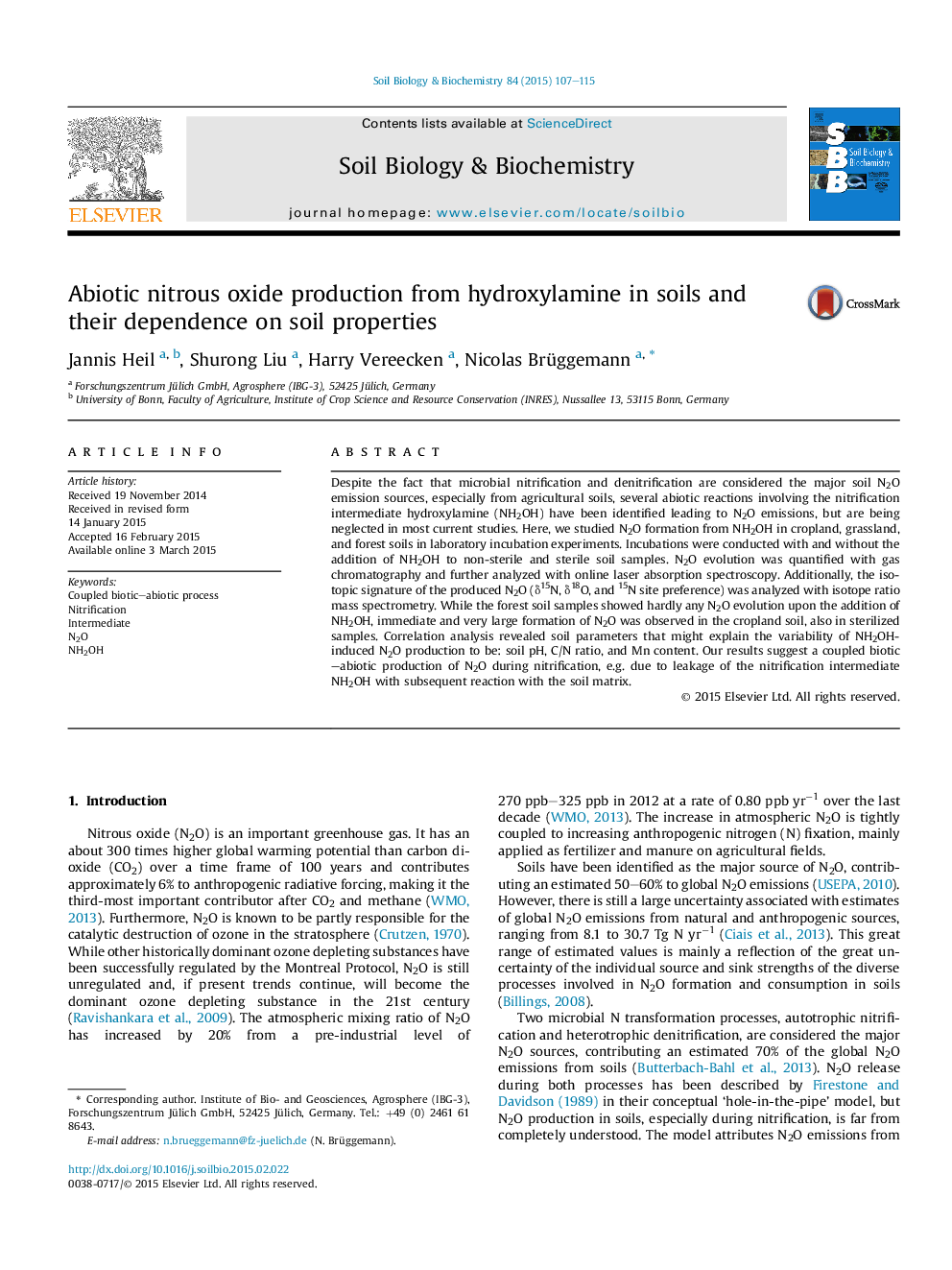| Article ID | Journal | Published Year | Pages | File Type |
|---|---|---|---|---|
| 2024549 | Soil Biology and Biochemistry | 2015 | 9 Pages |
•We propose a coupled biotic–abiotic N2O production during nitrification.•Hydroxylamine seems to be the key intermediate in abiotic N2O formation in soils.•We found high hydroxylamine-induced N2O emissions from a sterile agricultural soil.•One or more of soil pH, C/N ratio, and Mn content seem to control abiotic N2O formation.
Despite the fact that microbial nitrification and denitrification are considered the major soil N2O emission sources, especially from agricultural soils, several abiotic reactions involving the nitrification intermediate hydroxylamine (NH2OH) have been identified leading to N2O emissions, but are being neglected in most current studies. Here, we studied N2O formation from NH2OH in cropland, grassland, and forest soils in laboratory incubation experiments. Incubations were conducted with and without the addition of NH2OH to non-sterile and sterile soil samples. N2O evolution was quantified with gas chromatography and further analyzed with online laser absorption spectroscopy. Additionally, the isotopic signature of the produced N2O (δ15N, δ18O, and 15N site preference) was analyzed with isotope ratio mass spectrometry. While the forest soil samples showed hardly any N2O evolution upon the addition of NH2OH, immediate and very large formation of N2O was observed in the cropland soil, also in sterilized samples. Correlation analysis revealed soil parameters that might explain the variability of NH2OH-induced N2O production to be: soil pH, C/N ratio, and Mn content. Our results suggest a coupled biotic–abiotic production of N2O during nitrification, e.g. due to leakage of the nitrification intermediate NH2OH with subsequent reaction with the soil matrix.
